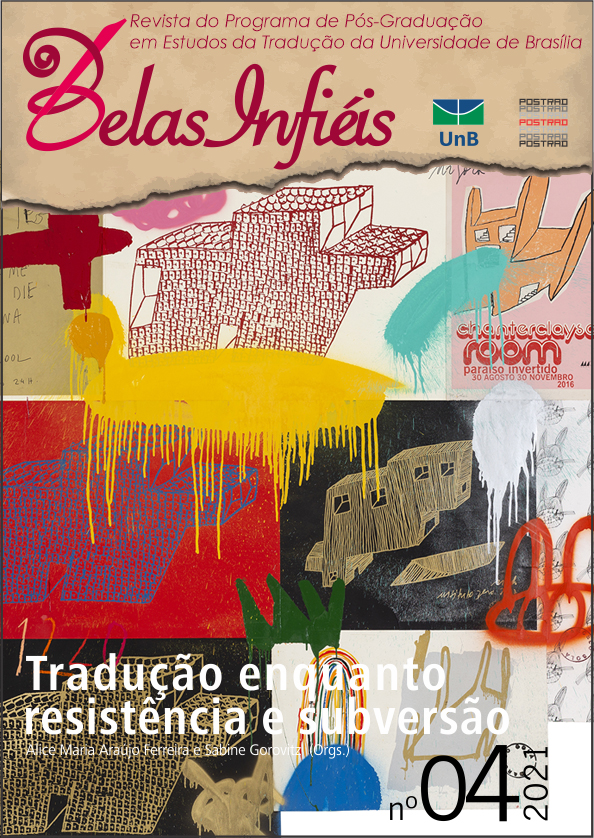Community Interpreting: A Trialogic Communication
DOI:
https://doi.org/10.26512/belasinfieis.v10.n4.2021.37041Keywords:
Community interpreting. Intercultural communication. The third. Trialogue.Abstract
This article explores some aspects of community interpreting, particularly the relationship between the professional, the client, and the interpreter, when participating in an intercultural exchange. Being asymetrical, this type of intervention generates many levels of difficulty (language, culture, moral code, power). Introducing Mikhail Bakhtin’s concept of the third, we will discuss the human dimension of community interpreting, when the interpreter might obey his/her conscience and feelings rather than professional and social norms.
Downloads
References
Bakhtine, M. (1970). Poétique de Dostoïevski (Isabelle Kolitcheff, Trad.). Seuil.
Bakhtine, M. (1984). Esthétique de la création verbale (Alfreda Aucouturier, Trad.). Gallimard.
Bakhtine, M. (1992). « Notes de Poumpianskij ». Bakhtine comme philosophe (pp. 221–252). Naouka.
Fish, S. (1980). Is There a Text in This Class? The Authority of Interpretative Communities. Harvard University Press.
Gentile, A., Ozolins, U., & Vasilakakos, M. (1996). Liaison Interpreting. A Handbook. Melbourne University Press.
Gile, D. (1995). Regards sur la recherche en interprétation de conférence. Presses Universitaires de Lille.
Lyotard, F. (1979). La condition postmoderne. Rapport sur le savoir. Les Éditions de Minuit.
Maingueneau, D. (1991). L’analyse du discours. Introduction aux lectures de l’archive. Hachette.
Schäffner, C. (2004). Translation, Research and Interpreting Research. Traditions, Gaps and Synergies. Multilingual Matters Ltd.
Downloads
Published
How to Cite
Issue
Section
License
Copyright (c) 2021 CC BY

This work is licensed under a Creative Commons Attribution 4.0 International License.
Given the public access to this journal, the texts are free to use but requires the recognition of the original authorship and initial publication in this journal to be properly stated.
 The journal allows the use of works published for non-commercial purposes, including the right to submit the work to publicly accessible databases. Published contributions are the sole and exclusive responsibility of the author(s).Â



















